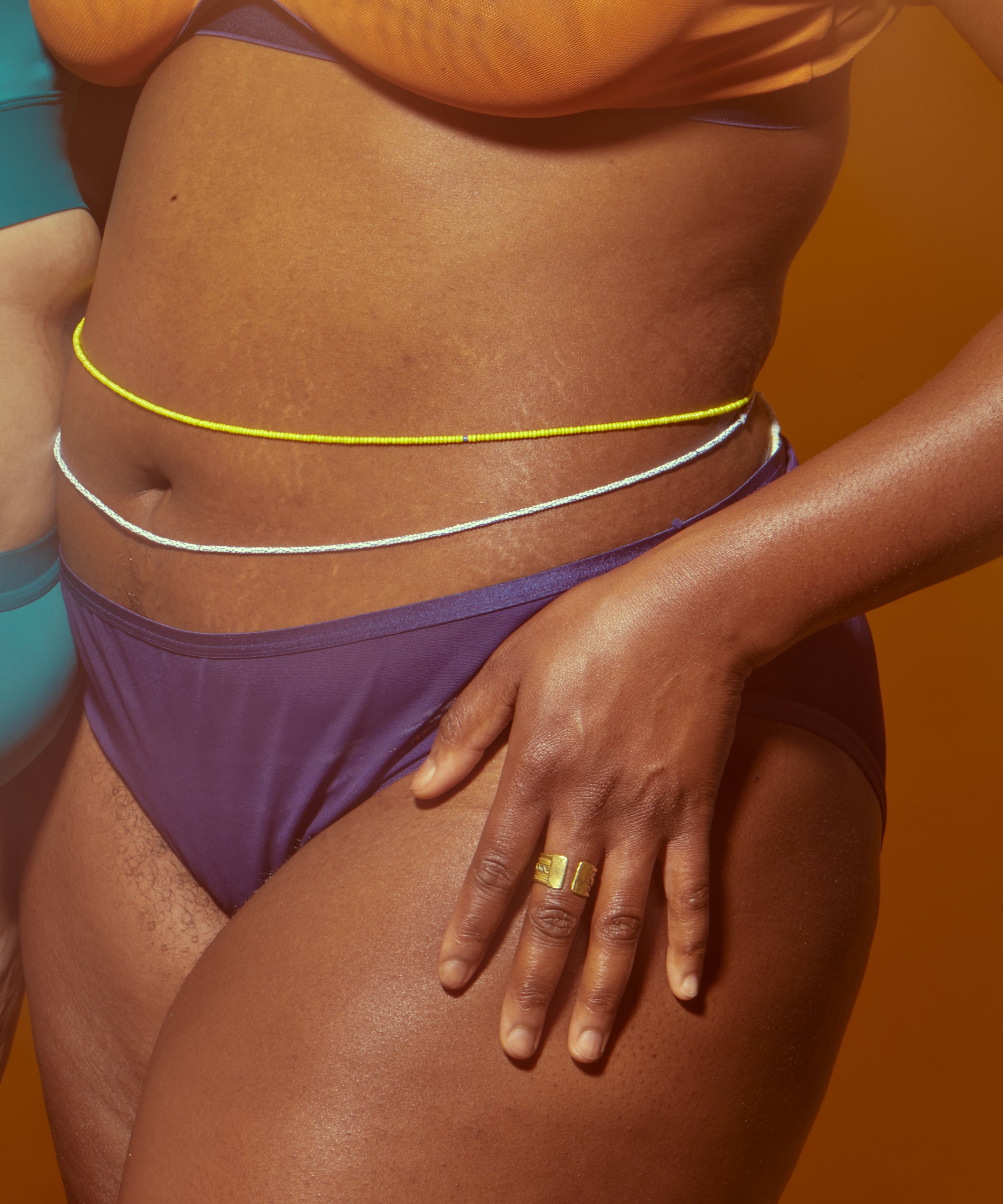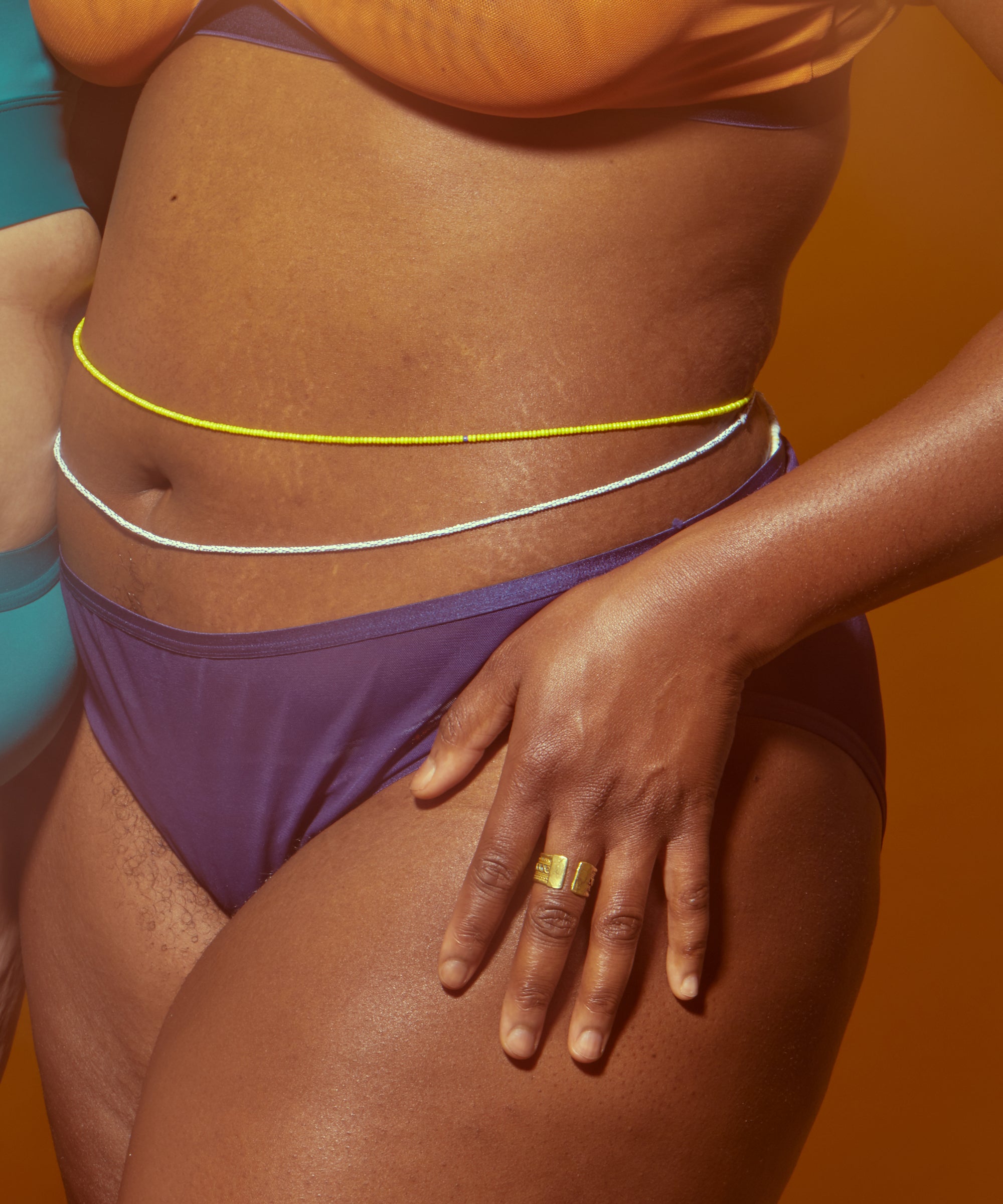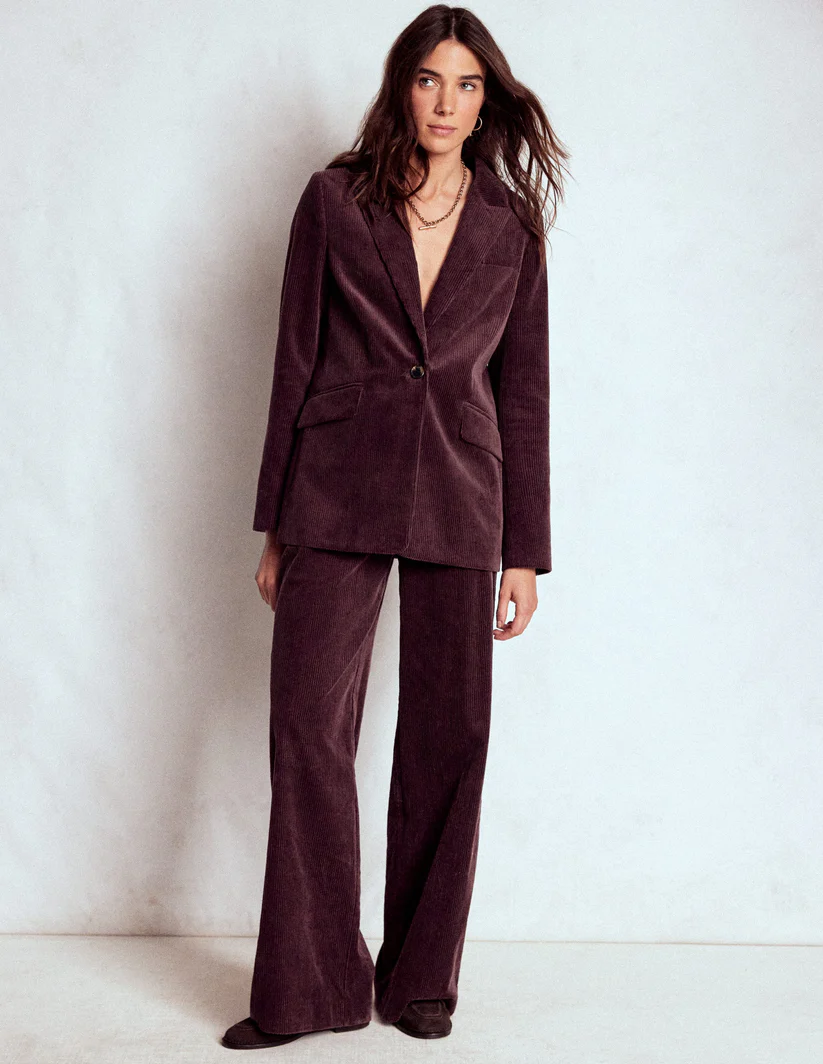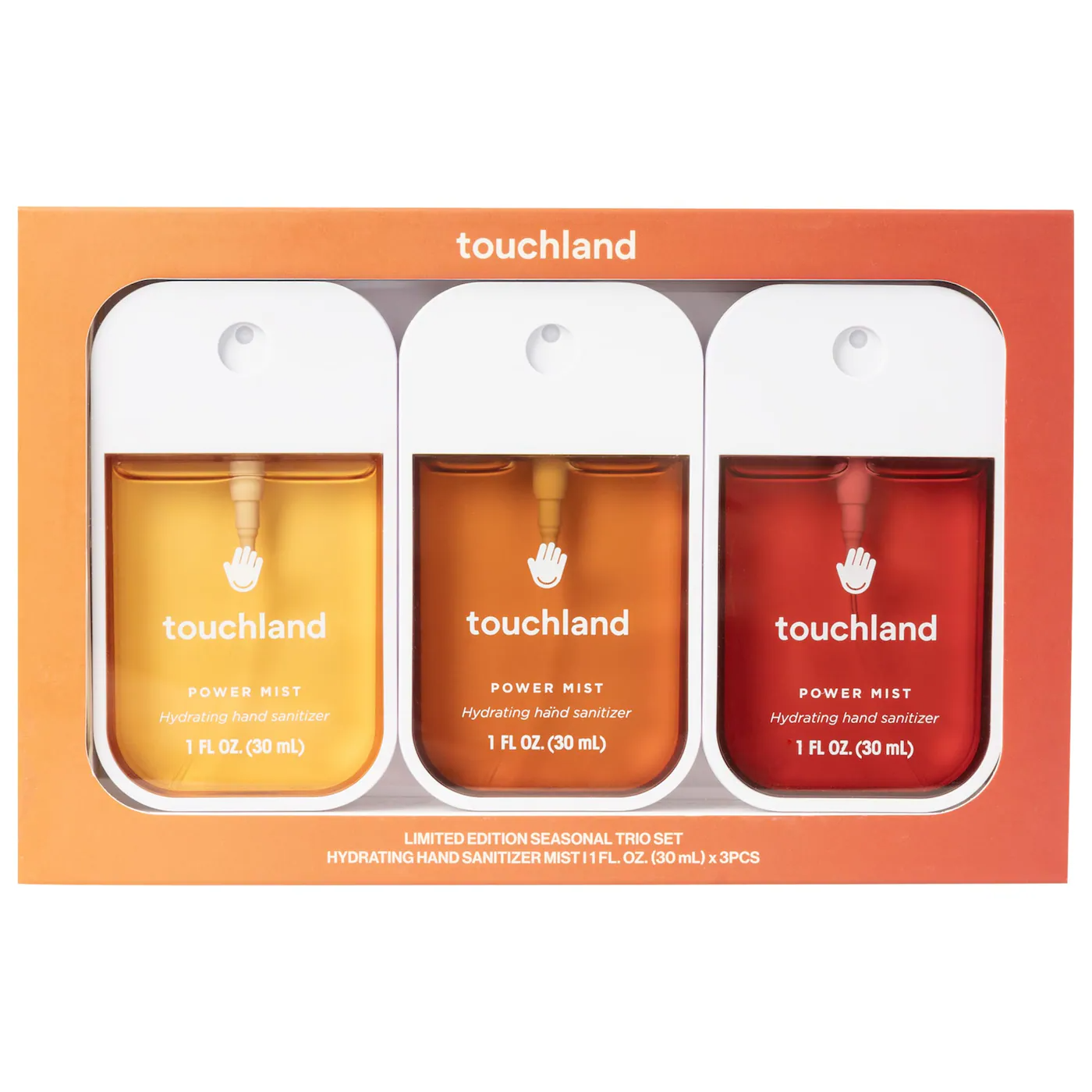

As long as I can remember waist beads have been a symbol of pride, femininity, tradition and heritage. I grew up in Nigeria and the delicate accessory worn around a woman’s stomach and waist is rooted deep within my culture, whether as a traditional symbol of womanhood and fertility or worn as a contemporary fashion statement. Before I started wearing waist beads, I didn’t feel a deep connection with my body nor sense of self, and I certainly had no idea of how I could adorn and celebrate my body as a Black woman. This changed when my “thick” sister paraded the house one day in skimpy clothes showing off her shiny, colourful beads with pride. I soon noticed a lot of the older women around me also wore waist beads and I observed how they exuded so much confidence and talked about their bodies with so much pride.
Now since I started wearing waist beads, they’ve given me a sense of stability and a heightened feeling of body awareness. While it has taken me a long time to accept who I am, I have grown to love my body more when I can feel my beads wrapped around my waist and belly. It seems I’m not the only person who feels this way. Waist beads have become more popular on social media in recent years, and the hashtag #Waistbeads has garnered more than 297.9 million views on Tiktok. From being used as body adornments and for spiritual reasons by Black women, the accessory has gained wide acceptance in popular culture — even Rihanna has been seen rocking similar jewellery over her baby bump recently.
While people of all races and ethnicities wear waist beads, this accessory undeniably has African origins, worn by both men and women in numerous African societies for generations. They are single or multiple strands of beads made from various kinds of glass, metal, crystal, bone and wooden beads that are worn around the waist and stomach. It’s understood that waist beads have origins in ancient Egypt, where they were known as ‘girdles’ and were worn by ladies as a status symbol. The Yoruba tribe of Nigeria popularised African waist beads and were used as early as the 15th century for a variety of reasons; female children are given waist beads by their mothers when they get their period to signify their rite of passage into womanhood and, in some African societies, as proof of her fertility and sexuality.
Despite their long history within African cultures, some people however see waist beads as something unholy. As a result of colonialism, a lot of innocent and simple African traditions have been ruled out as sinful, and waist beads haven’t escaped similar judgements. The more waist beads have been made famous by some contemporary online sensationalists and charm entrepreneurs, a lot of people have attributed them to some spiritual powers or divination thereby demonising it. “Before now, if a woman was seen wearing waist beads, she’d be viewed as sexually promiscuous, demonic, and filthy and might even be considered a lesbian,” shares Blector*, 22, who also grew up in Nigeria and runs a waist bead business. “But now, they are largely seen as body adornments and self-love accessories,” she explained.
I can remember my mom continually questioning my sister about why she wore waist beads. She would respond that she simply loves how they look and feel on her body. It should go without saying that there is nothing evil about wearing waist beads. Yes, they can be used for protection or as charms of some sort but how waist beads are worn are entirely dependent on who is wearing them and their personal intent.
“Since wearing waist beads, my stomach became the main attraction…and feel more confident showing it off.”
Samantina zENON
@kurukerwaistbeads How to put waistbeads on. #waistbeads ♬ original sound – toohot4scotty
Today, the use of waist beads have evolved to meet the various desires of the modern wearer; from boosting body confidence, enhancing sexual attraction, celebrating femininity, and, in many cases, tracking weight gain or loss. While modern dieting tools can have negative implications, waist bead wearers say they feel less body conscious in the accessory.
“No matter how much I dieted or how many pounds I lost. I always felt like I could never have the perfect stomach. When I tried pursuing my dream career as a model, I was shamed by many agencies for not being thin enough and not having “the look”. These negative remarks were affecting my mental health and also my relationship with my body,” NYC actress and author Samantina Zenon explains to Unbothered. “My stomach has always been the problem area for me, and for many years, I felt self conscious and uncomfortable wearing certain clothes, because I did not have the flattest stomach,” she added. “Since wearing waist beads, my stomach became the main attraction, and people always compliment my waist beads, which helped me embrace it and feel more confident showing it off.”
“I use waist beads to monitor and track my weight, however my primary reason for wearing [waist beads]is to help in keeping me anchored to myself, my intentions, and commitments made to myself,” adds 32-year-old Timia Porter, from Inglewood, founder of waist beads online store Turquoise and Salt. Porter started her business making waist beads in 2017 in an attempt to “embrace her magic as a Black woman” and learn about her roots and her ancestors. “I’ve become more accepting and mindful of my inner voice. Checking in with myself more. Being more in tune with my energy and controlling my thoughts,” she explains. “For me, [waist beads]are gentle reminders to be present and aware of self.”
It’s interesting just how much of an impact these body adornments can have on a person’s self-image. For Blector, waist beads helped her explore the reasons she disliked her body and found her self-hate to be deeply rooted in her past sexual abuse experiences. “As I kept on wearing my waist beads they became a symbol of self-love for me and they also started serving as a reminder that healing from sexual abuse is possible for me, that my body is mine and deserves to be beautified and treated with care,” she explains. Blector’s healing process led her to start beauty and consciousness brand, Blec, committed to helping Black women love themselves, process their healing journeys and show up as their most authentic selves, and says the beads can be a liberating expression of “self-love.”
“As a Haitian woman I see waist beads as a way of paying homage to my ancestors.”
As more Black women proudly share their waist beads online, there are countless comments and posts on social media platforms, particularly TikTok, from non-Black people who are constantly asking Black people whether it’s right for them to wear waist beads too. As always, there is a thin line between cultural appropriation and appreciation. In this respect, cultural appreciation is knowing what the beads symbolise and purchasing them from African-owned businesses, but cultural appropriation is wearing them just because you think they’re a fad. According to Porter, “If anyone is buying, selling, making, or wearing them without giving reverence to them or knowing their proper name, historical context, uses, and purposes, calling them “belly chains” and saying they originated in America or China is not OK.” Porter acknowledges that African people are “very protective” when it comes to the wearing, promotion and selling of waist beads, encouraging non-Black people to buy from the source, not just from a random online store. “Know the history yourself. Do your research and speak of them in a way that doesn’t strip them of their significance, tradition, and practices,” Porter stresses. “Non-Black people can perhaps buy waist beads that are made with beads or stones that are not tied to African culture. Also their waist beads shouldn’t include African shells, Ankh cross or other African cultural symbols,” Zenon adds.
Far beyond a fashion statement, waist beads are a common way for Black women across the globe to connect with their ancestors and commemorate their ancestry and cultural practices. “As a Haitian woman I see waist beads as a way of paying homage to my ancestors, connecting with them and celebrating my heritage that was stolen from my ancestors by the French colonisers,” says Zenon.
In many ways, waist beads have evolved into a cultural practice of its own among Black women in the West, one that represents the entire diasporic experience. Due to the transatlantic slave trade, many women across the diaspora have no firsthand knowledge of their West African lineage. By reclaiming waist beads Black women have the opportunity to tread in their ancestors’ footsteps. The beads serve as a continual tangible reminder that cultural heritage is never as far away as you would imagine, and it’s up to you to decide how you want to interpret it.
For me, wearing waist beads is one of the Blackest things I can do. Through waist beads, I’ve been able to commit to rituals and routines that connect me to my roots and improve my overall well-being, and I can’t wait to get more strands to wrap beautifully around my waist and belly, because this is the kind of self-love I’m proud to showcase.
If you have experienced sexual violence and are in need of crisis support, please call the RAINN Sexual Assault Hotline at 1-800-656-HOPE (4673).
Like what you see? How about some more R29 goodness, right here?
Lizzo’s New Show Made Me Face My Body Insecurity




